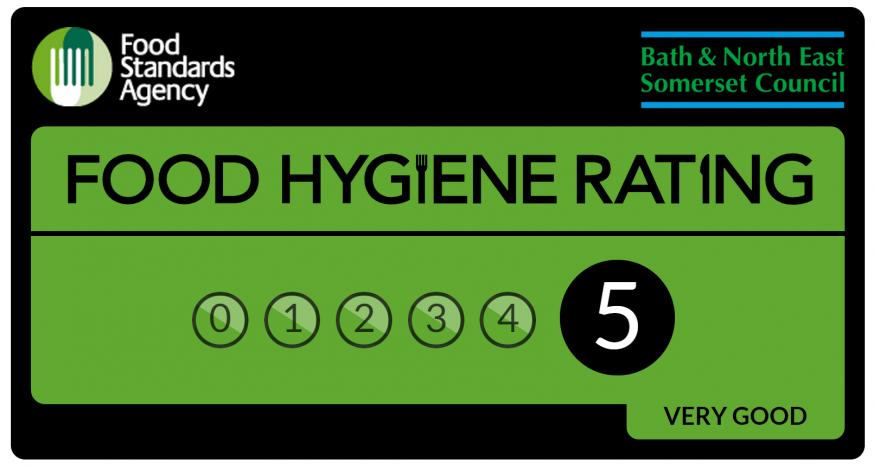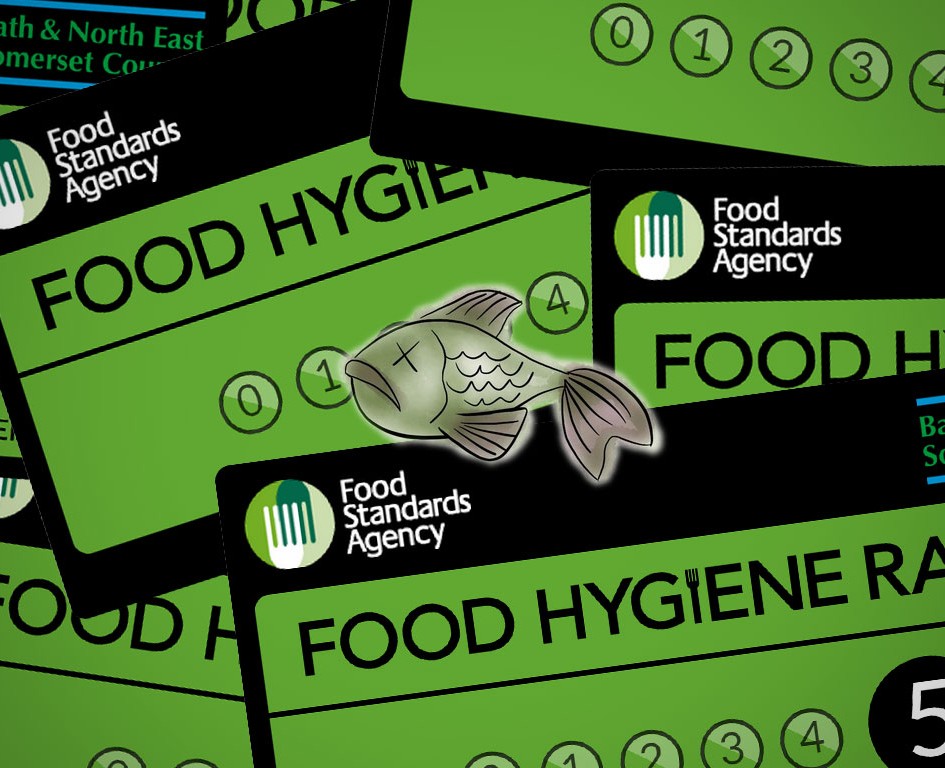Bath Food is one of the earliest uses of open data we’ve seen in Bath, and its elegance and simplicity holds a lot of lessons.
Finding practical uses for open data that resonate with the community can be elusive. Raw data is dull and while many projects are too easily mired in the technical side, Bath Food is a fine example of how focus, simplicity and a strong delivery mechanism can make a real public impact.
If you thought Bath Food was “just a Twitter account”, you may have missed the point. I think the subtleties are worth a closer look.
How it works
Bath Food started one evening in 2012 at a Riot hack night. Felix Renicks (of @WeLoveBath fame) seeded the original idea by publishing “Scores On The Doors” data from BANES Council. Sadly that ended prematurely when the council stopped publishing the data.
Duncan Barclay resurrected the idea with data from the Food Standards Agency which he originally scraped from their website. The FSA then switched to XML feeds and the first hard lesson was keeping track of changes in the data: Ratings are updated in bulk roughly once a month, and sometimes more frequently when restaurants appeal or get re-rated.
Bath Food detects ratings updates and simply tweets them.
The project is written primarily in PHP and the website exists purely to enable Twitter cards on each tweet. It’s a small detail but he has made maximum use of the delivery platform.
What happened next
 Duncan kept his project objectives tight: Bath Food is for people who eat out in Bath. The data is confined to restaurants in BA1 and BA2, and he simply reports the latest ratings.
Duncan kept his project objectives tight: Bath Food is for people who eat out in Bath. The data is confined to restaurants in BA1 and BA2, and he simply reports the latest ratings.
It’s noteworthy that there are no additional comments, opinions or reviews; the service leaves it for others to comment on the information provided.
The account has incited plenty of debate, not all of it good. The local paper was quick to publish concerns from local restaurant owners who were complaining that the account was harming their business. It’s a shame the paper removed some of the reader comments because the public were very supportive: People liked knowing about food ratings.
This highlights an interesting lesson: Not everybody likes open data. Be focussed on the mission.
The @BathFood account now has 1300 followers and has become an established part of the community. The early ire has calmed and restaurateurs regularly reply to ratings tweets, expanding on what they are doing to improve their kitchens.
The project uses open data to calmly shine a light on food hygiene and while there has been no formal study, the anecdotal case for Bath Food having helped to raise hygiene standards in Bath is compelling.
Takeaways
We need no convincing on the merits of open data, but open data can only get real traction when people see it in action. Bath Food may be fairly simple at a technical level but I think it worked because of some key ingredients:
- It’s easy to use
- It’s a topic people care about
- It found a good marketing channel
- It never strayed from its objectives
- It didn’t stop once shipped
It’s a fine case study in sensible, meaningful use of open data and I’d like to say a big thanks to Duncan for taking the time to explain the in’s and out’s of what he made. Bath Food is a service I’ve come to love on a lot of levels.
For the latest food hygiene ratings in Bath, follow @BathFood – and to see Duncan’s latest project, check out @BathPlanning 😉

